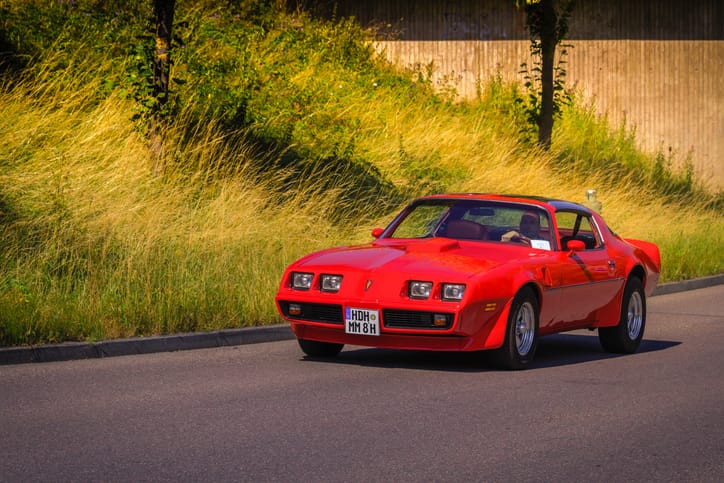The Pontiac Trans Am: A Legacy of Muscle and Attitude

The Pontiac Trans Am is a legend of the American automotive industry, synonymous with power, performance, and a rebellious spirit that still enchants car enthusiasts today. With its aggressive styling, potent engines, and iconic "Screaming Chicken" hood decal, the Trans Am became embedded in popular culture, a symbol of both freedom and raw horsepower.
Origins of a Muscle Car Icon
The Trans Am debuted in 1969 as a performance package for the Pontiac Firebird. Pontiac, a brand within General Motors, aimed to rival the success of Ford's Mustang and create a more potent version of their pony car. The name "Trans Am" was a nod to the Trans-Am Series – a popular road racing championship.
The initial Trans Am package enhanced the Firebird with a larger 400 cubic-inch V8 engine, an upgraded suspension, rear spoilers, and distinctive white paint with blue racing stripes. It was a statement car – bold, loud, and unapologetically American.

The Golden Age: 1970 - 1981
The 1970s became the Trans Am's golden age. While the muscle car era was reaching a turning point due to emissions regulations and the fuel crisis, the Trans Am bucked the trend. Pontiac kept pushing for more performance, and the Trans Am evolved into a true performance machine.
The second-generation Trans Am debuted in 1970, featuring a sleeker, more aerodynamic body style. This generation is arguably the most recognizable. The 400 cubic-inch V8 remained the standard engine, but optional powerplants like the 455 cubic-inch Super Duty V8 elevated the Trans Am into supercar territory. The distinctive "shaker" hood scoop became synonymous with the Trans Am, feeding fresh air directly into the hungry V8 engine.
The Trans Am's popularity skyrocketed in 1977 with the film "Smokey and the Bandit." Starring Burt Reynolds as the charismatic Bandit, the film featured a black and gold Trans Am in a high-speed cross-country chase. The movie cemented the Trans Am's status as an outlaw icon – a symbol of rebellion and the pursuit of thrill.

The 1980s and a New Era
The Trans Am entered the 1980s with a redesign for the third generation. Its shape echoed the popular wedge designs of the era. While engines and performance took a slight hit initially due to even stricter emissions regulations, the Trans Am maintained its bold attitude and flair. Models like the Turbo Trans Am sought to recapture some of the earlier power with turbocharged V6 engines.

Perhaps the most iconic Trans Am of this generation was the Knight Industries Two Thousand (KITT) from the beloved television show "Knight Rider." The talking, self-driving, crime-fighting Trans Am captured the imaginations of viewers and further solidified the Trans Am's place in pop culture.
Decline and Legacy
The 1990s saw the Trans Am's performance improve, but its design grew less distinctive. With the rise of fuel-efficient foreign cars and the decline of the muscle car era, the fourth generation Trans Am, introduced in 1993, struggled to find its niche. Production of the Trans Am (and the Firebird) ceased in 2002, marking the end of an iconic run.

The Pontiac Trans Am's legacy is one of raw power, unapologetic style, and cultural impact. It captured the essence of the American muscle car – loud, brash, and overflowing with attitude. While the original Trans Am may no longer be in production, its spirit lives on in the hearts of car enthusiasts and as a powerful symbol of a bygone automotive era.
